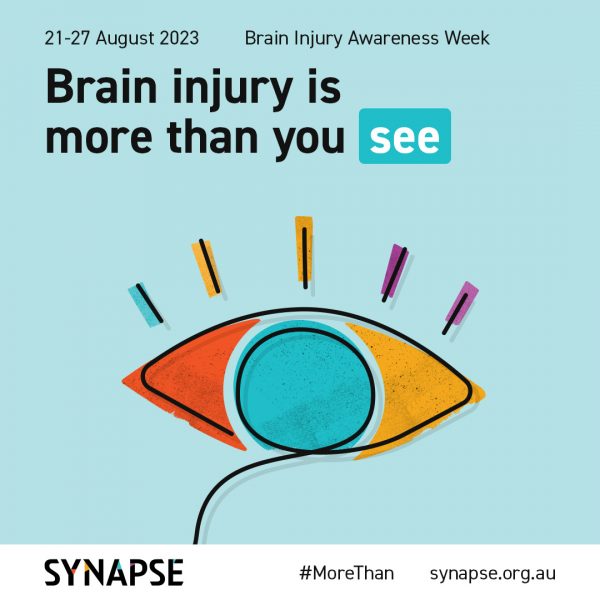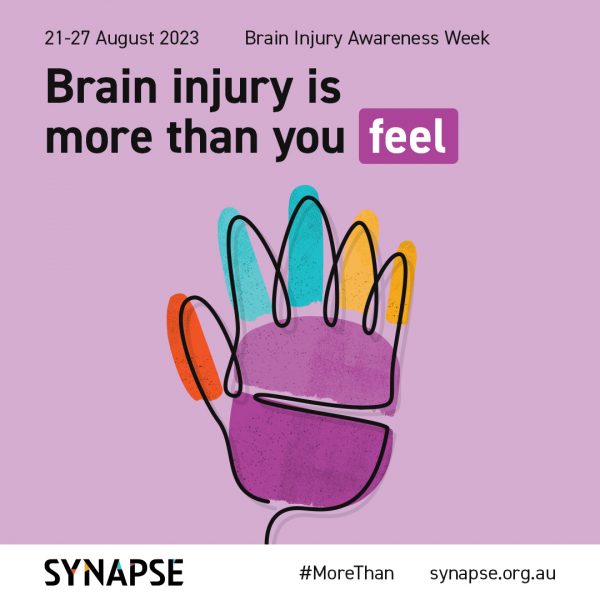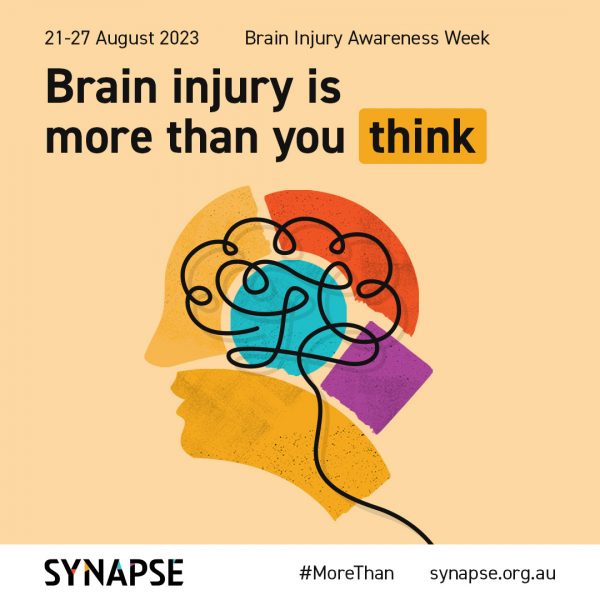Brain Injury Awareness Week (BIAW) 2023
Project Spotlight for BIAW, 2023
The Hopkins Centre is proud to partner with Griffith University's Inclusive Futures: Reimagining Disability in support of Brain Injury Awareness Week (BIAW) 2023.
With more than 70% of our work focused on developing bold ideas about brain injury rehabilitation, understanding how our systems can better support those who have experienced brain injury and creating innovative new solutions in this space. BIAW is a time to raise awareness of the wide-reaching impacts of brain injury, showcase our research in this area and share stories and achievements of the one in 45 Australians living with brain injury and theirs families.
The theme of BIAW 2023 is 'Brain Injury is More Than...’. Brain injuries are as individual as the people who live with them and this theme helps us explore how, although brain injury isn’t always seen, it’s a complex disability that affects how people think and feel as they recover and reintegrate into everyday life.
In celebration of this year's theme, The Hopkins Centre and Inclusive Futures: Reimagining Disability are spotlighting our research projects, partners and people that are helping to shift the narrative around brain injury to be More Than... more than you see, more than you feel, more than you think.
Brain injury is more than you see
The DIAMOND Project
“Spatial neglect” refers to an attention bias people may experience following acquired brain injury (ABI).
Although spatial neglect is common following ABI, it is regularly underdiagnosed, and poorly treated. The result can be long-term cognitive disability.
Hopkins researchers Michael Norwood and Chelsea Marsh, in collaboration with clinician-researchers at Metro South Health have been working on a novel virtual reality (VR) attention assessment platform. The Attention Atlas (AA) is a gamified VR assessment of spatial neglect.
The AA is part of a new generation of translational neuroscience that uses the latest advances in technology and brain science, including technology repurposed from the gaming market.
Through a series of experiments, and using eye-tracking, controller and headset location data, and descriptive measures such as reaction time and accuracy, The AA uses visual parameters to identify neglect from non-neglect in patients with ABI. This approach to rehabilitation has the potential for highly accurate, highly engaging, personalised care.

Brain Injury is more than you Feel
The value of incorporating a family focus in community-based transitional rehabilitation following acquired brain injury
Acquired brain injury (ABI) has a profound impact not only on the individual but also on their significant others (family, friends)
Transition from hospital to home can be a very stressful time. Significant others may experience increased caregiver strain & risk of psychological distress.
The Acquired Brain Injury Transitional Rehabilitation Service (ABI TRS) incorporates family-oriented practice in a 12-week transitional rehabilitation program.
This includes group programs & resources such as:
- Family education session (general ABI education offered to all families)
- Conversation partner training (improve and support communication and strengthen relationships)
- Strength2Strength (build resilience in families whilst they are supporting a loved one with an ABI)
- My Dad bumped his brain booklet (for children aged 4 – 9 to help explain ABI)
- Interpreter / translation services
Research demonstrates that involvement in ABI TRS following hospital discharge:
- Reduces caregiving strain compared to usual practice.
- Significant others have no negative change in their psychological status from discharge to 12 months post.
- Significant others experience sustained benefit from being involved in transitional rehabilitation – it is important to ensure that they are involved
You can read more about consumer perspectives of ABI TRS in the publication: “It gave her that soft landing”: Consumer perspectives on a transitional rehabilitation service for adults with acquired brain injury

Yoga participation and the impact on the lived experience of the inpatient brain injury rehabilitation setting
Yoga practice cultivates health and well-being through the regular practice of a range of many different techniques including postures and movement, breath awareness and breathing exercises, relaxation and concentration, self-inquiry, and meditation.
Our partners at the Brain Injury Rehabilitation Unit (BIRU) at the Princess Alexandra Hospital, Metro South Health, wanted to explore the therapeutic benefits of yoga, which is commonly practiced for exercise and relaxation in Western society, for people with ABI. They conducted a study within the BIRU ward to investigate this. The program explored the experiences and perceptions of people with ABI who participated in a trial, ward-based yoga program.
There were improvements in self-reported levels of well-being, satisfaction, and relaxation pre- and post yoga classes. Overall, findings supported the benefits of a yoga program within the inpatient rehabilitation setting.
Brain Injury is more than you think
Assistive Technology supporting memory function after ABI
People with ABI can experience impaired memory function, impacting individuals' ability to plan ahead, retain new information and carry out future tasks.
Assistive Technology including mobile phones, virtual reality, tablets and home automation systems can be supportive ways of improving memory in daily life, after ABI.
Hopkins researchers Tamara Ownsworth, Jessie Mitchell and Camila Shirota, in collaboration with Metro South Health clinician-researchers, have been investigating the effectiveness of electronic AT for supporting phases of memory in daily life after Brain Injury.
As part of this review, the team developed a framework of user characteristics and design features that influence the uptake and effectiveness of AT for supporting memory-related function. The framework has valuable practical implications in terms of how AT is designed and how it can be personalised for individual users in clinical practice.
Jessie Mitchell attended the 20th Neuropsychological Rehabilitation Special Interest Group of the World Federation for NeuroRehabilitation (NR-SIG-WFNR) Conference in June to share the findings from this research. She presented a datablitz and poster on the paper “Electronic assistive technology to support memory function after traumatic brain injury: A systematic review of efficacy and user perspectives”

Tags: Brain Injury, Brain Injury Awareness Week, BIAW
Related Articles
- World-leading centre for rehabilitation and disability research opens
- Improving the ability of employers to communicate with brain injured workers
- THC Researcher awarded GU New Researcher Grant for study in social and emotional wellbeing
- This week is Brain Injury Awareness Week #BIAW20
- THC Ambassadors share their experiences this Brain Injury Awareness Week

